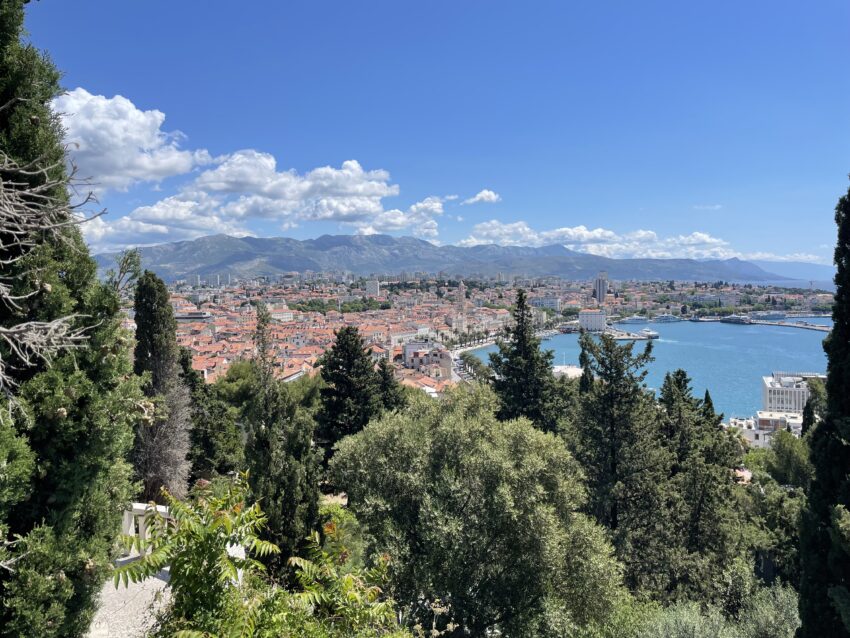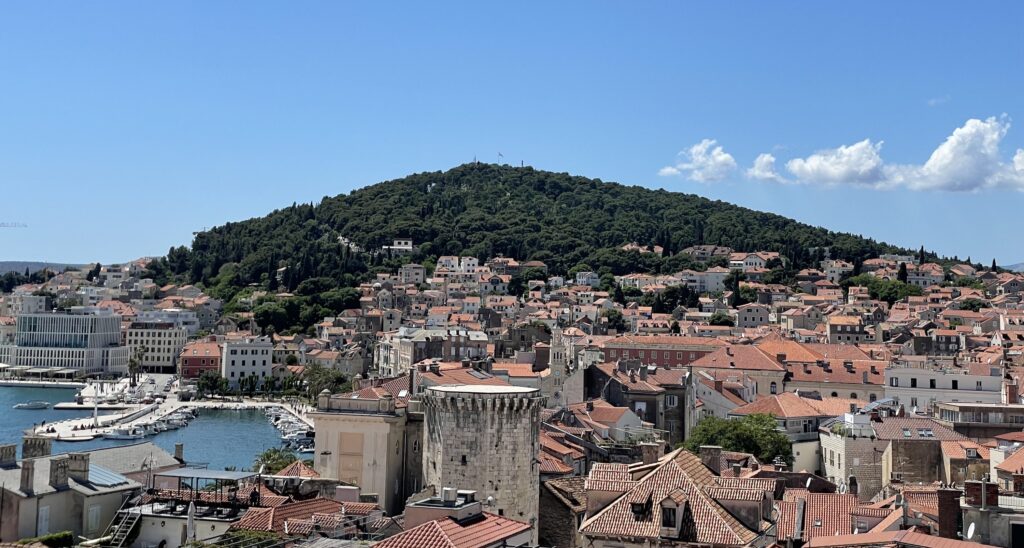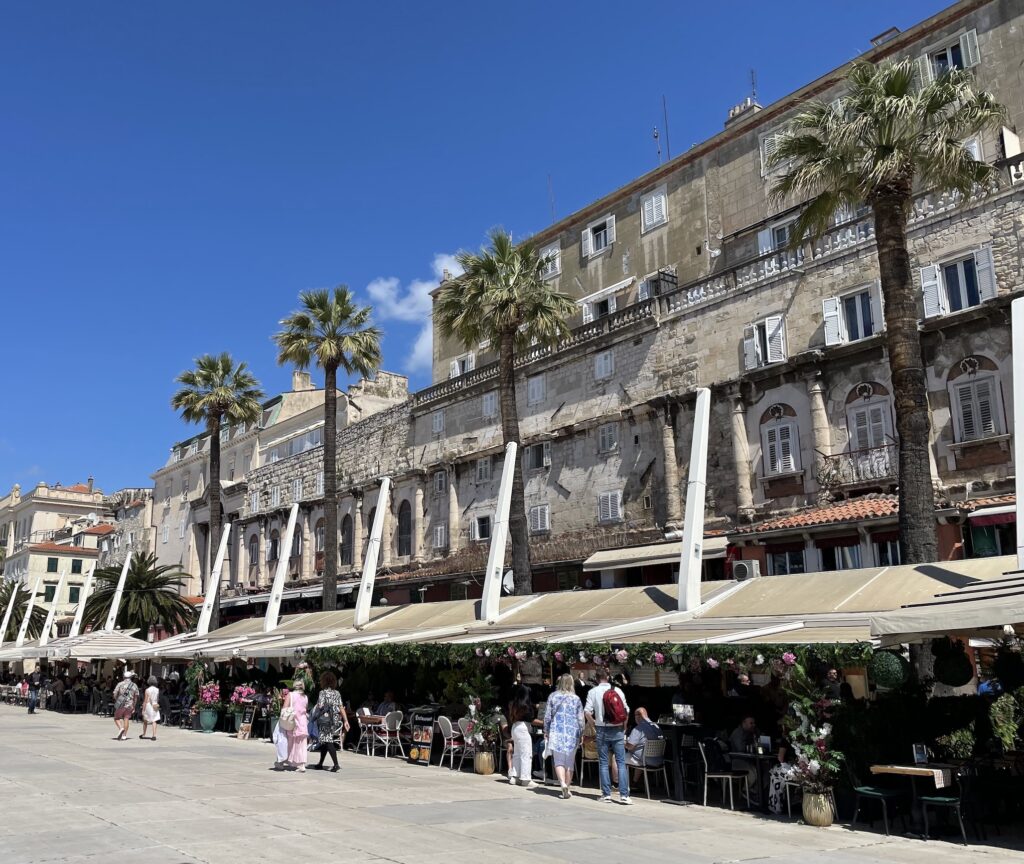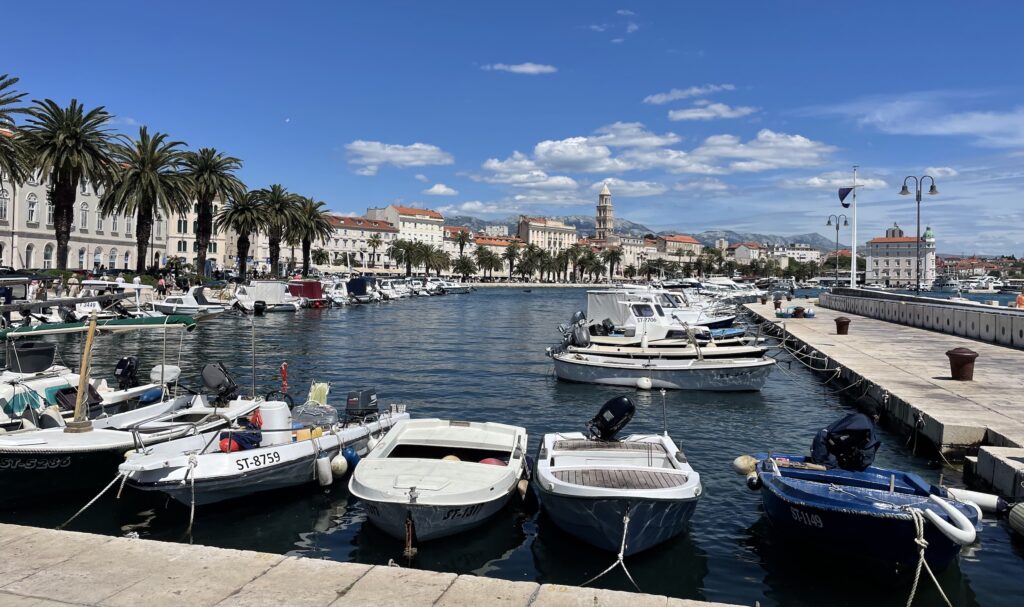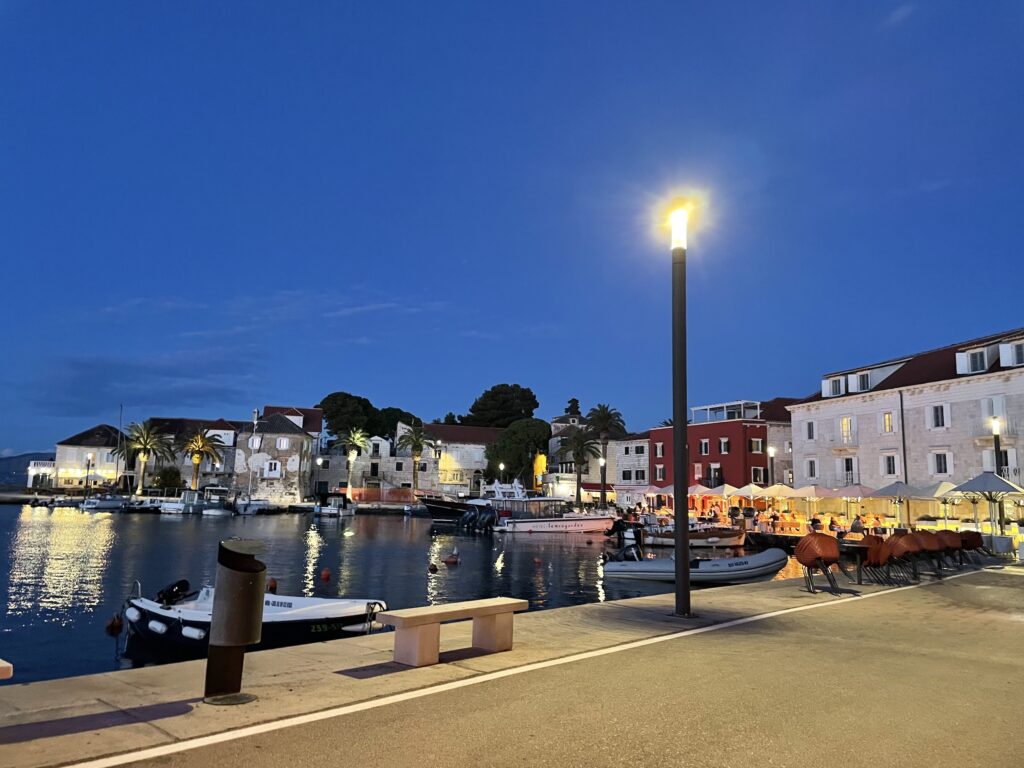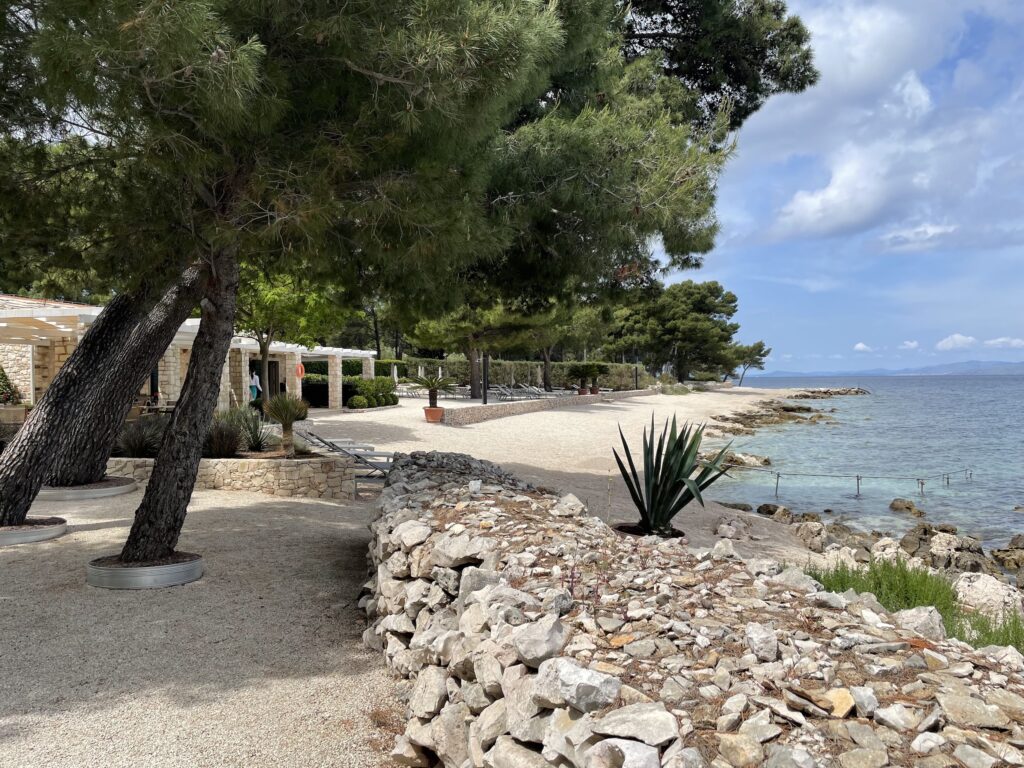Visit most ancient Roman sites and you’ll invariably be greeted with ‘keep off’ signs, barriers and staff who say ‘no’ whenever you deviate from a well-trodden path. But Split in Croatia is different because the famed Diocletian’s Palace remains in use today as a home for some, a place to stay for others and as a venue for eating, drinking and shopping for all.
The palace has been central to city life since the Emperor Diocletian developed it on the Adriatic coast, just a few miles from the Roman city of Salona. It’s been knocked about, added to and altered over the centuries, buildings have disappeared and others have been repurposed but its soul and the ghosts of the past remain. It’s a fascinating place, if incredibly busy and fast-becoming a victim of overtourism. I couldn’t believe how many loud Americans there were in a city I assumed wouldn’t be on their radar so much, but there were plenty of other folk from the four corners of the world, inevitable stag and hen parties.
We stayed for a few days in the Spring of 2025, and followed it with a stop at a luxury hotel in the modest and much quieter village of Sutivan on the nearby island of Brač. A few days is more than enough to devote to Split for there’s not a huge amount to see in Croatia’s second city, unless you want to spend sunny days inside its various museums.
Diocletian, however, spent years there. He was born to a family of low status in Dalmatia but a successful military career saw him rise through the ranks until he was chosen by a group of leaders to be Emperor in 284. He did much to stabilise the empire during his reign, introduced an unusual power-sharing regime but is best remembered today for his persecution of the Christians, perhaps because he was bored by their tedious lectures on morality and opposition to Sunday trading. He surprised many by abdicating in 305, retired to his new palace and, unlike many of his predecessors, managed to avoid the assassins’ knives, dying in around 311.
To call the place a palace is a bit of an understatement – it was built to be more like a mini-town or fort. Diocletian’s quarters were to the south, overlooking the sea, while to the north were the extensive and less exotic quarters and offices of his support staff – servants, soldiers and the like. Our hotel, the Murum, is just one of many homes and businesses tucked into these old palace walls, with just a few rooms but stylish and friendly.
The palace, a UNESCO World Heritage Site, is best explored randomly for even with a good map the maze of narrow alleys is pretty confusing and disorientating. Their stones polished smooth by the footsteps of millions over the centuries, the alleyways are shaded by towering limestone buildings that ensure they remain cool in the heat of a sunny day. Exploring, we found a patch of green populated by cats, countless restaurants and bars, gelatarias by the score, dead ends, fancy jewellers, a few signs of dereliction and some precious quiet spots. But there are far more areas where the crowds take over, notably close to the South Gate where the courtyard known as the Peristyle overflows with tourists and a few blokes inevitably dressed as Roman soldiers pose for photos with the unimaginative.
The Peristyle may be far too busy but nearby are some fine sights. The Temple of Jupiter to the east is particularly striking, with its barrel coffered vault roofspace, various reliefs depicting the gods and a headless sphinx outside. The Christians converted it into a baptistery. Opposite is the Cathedral of Saint Domnius, built originally as Diocletian’s octagonal mausoleum and now given over to the usual extravagance of organised religion. We climbed the Romanesque bell tower in order to appreciate just how unfit I was and to get some excellent views of the city, the spectacular mountains that cut it off from the interior of the country and the islands nestled in the turquoise Adriatic beyond.
Also nearby is the entrance to the palace cellars, which are extensive, damp and gloomy and largely empty except for a few architectural discoveries and information boards.
The South Gate leads to the mostly pedestrianised Riva, an attractive waterfront promenade with more crowds, yet more bars and restaurants and the usual detritus of modern tourism (ticket booths, touts, people offering tuk-tuk rides and the like). To one side lay the busy harbour with ferries to the islands, to the other a fancy marina.
Beyond the palace to the west is Narodni trg, or People’s Square, and the old Town Hall. This is part of the medieval city, just as busy and with a similar feel to the palace if slightly more open. Further west still lies the Marjan Hill, a wooded park and city playgound offering shade, some historic chapels, a small zoo and an attractive if modest botanic garden that’s gradually being restored. There are a few points where it’s busy – mostly where the views of the city and the Adriatic are at their best – but it’s possible to escape the crowds if you don’t mind a climb on a hot day.
On our return to the city a week later and before our flight home, we took a pleasant walk along the much-redeveloped waterfront to the Labud sailing club, past catamarans and other fancy yachts, and then along the coast at the foot of the Marjam Hill. At the base of the rocky hillside were a few typically Croatian gravel and stone beaches that looked utterly uncomfortable but were clearly very popular with bathers.
Much of the character of historic Split comes from its creamy limestone, much of which was quarried on the nearby island of Brač. And it was there that we headed for the rest of our stay in Croatia. The ferry ride to the small port town of Supetar took less than an hour and we were soon whisked away by taxi to the smaller fishing village of Sutivan just along the coast, past endless olive groves and fields composed mostly of rock.
We were based at the luxury Hotel Lemongarden, which is made up of a collection of converted historic buildings around the little harbour and has beautiful gardens and a welcoming pool. When the weather was good, we had breakfast on the water’s edge and ate outside at the various restaurants nearby. Watching the sun set in the west from the Pizzeria Bracera was a highlight one evening, while every night we were hypnotised by clouds of swifts, swallows and martins darting about in the sky above us, occasionally disappearing into their nests in the eaves of the village’s ancient buildings.
To be fair there isn’t much else to do in Sutivan, which was fine by me. It’s the sort of place where the arrival of a small boat in the harbour generates a degree of hysteria. We took a leisurely walk through its narrow, hilly streets, which were exceptionally quiet. Sadly, most properties looked like holiday homes, suggesting that Sutivan is becoming one of those settlements that only really functions in high season. We climbed up to the small St Roko Church, where the graveyard and catacombs lie. They’re all very well tended and the views beyond were fantastic.
On another day we cycled along the coast to the hotel’s private beach, past pine trees and olives and one or two building plots that suggest Sutivan is slowly spreading along the seafront. The beach has been much improved by the owners, with an attractive bar and restaurant, while the typically challenging gravel has been much softened by the importation of much finer stone. We parked ourselves in the shade of the pines, read and were serenaded by a turtle dove that had managed to survive the morons that like to shoot them around the Med.
The weather for May was pleasant, not too hot by day, not too chilly at night. One day was drab so we made use of the hotel’s swanky spa, steam room and sauna. On another the clouds rolled in and the island was battered by a storm. We watched from the safety of the local cafe bar as the boats rolled around at their moorings while the wind whipped around the village and rain lashed down. But as quickly as it arrived, the storm drifted away and calm was restored.

